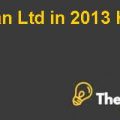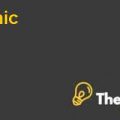
Method of Joint Cost Allocation
The main aim of joint cost allocation is as follow:
- To identify the traits of the joint production process
- Joint product cost is allocated according to the assistances-received approaches and value of the relative market approaches.
- Help in allocating the by-product which comes from Joint allocations
- Help in the management decision making and their mistakes.
- Essence of this method is to help actual product cost percentage.
The Actual Meaning of the Joint Cost
This cost allocation is done for the reporting aim with respect to financial statement. These aims are to manage the inventory values and control revenues. The allocation of joint cost method must be found, yet subjective, to assigning the joint cost as sensibly as possible. There number of approaches to allocate the joint cost but few are as follows
- Benefits-received Approaches
- Relative Market Approaches
These approaches follow such method which help in assigning the cost according to their respective basis which may be sales or actual units. The Benefit-received approaches include physical unit’s method and weighted average method. On the other hand, relative market values include split off at revenue value point, net realizable method, constant gross margin and revenue to production method. In the excel sheet these methods are followed with each respective values. These values are the justifiable according to their cost center and cost measurements. These approaches and method are discussed in the separate heading with their broad prospective.
Benefits-Received Approaches
The benefit-received approaches uses the actual things in which cost are ascertained according to such benefits like physical unit sold out and received new one in the company. They allocate the cost according to the benefits received such as machine production and its reflections. The following are method of this approach
Physical Units Method
This method is also known as units of physical outputs like heat at ease, capacity or weight that quantify the benefits received which are used to distribute joint cost. In this method, it allocates each joint product according to the same amount through which joints costs are ascertained. This is the very crucial method under which practical life method falls. The example of the company in which this applies is the manufacturing the forest product under the conversion cost to the all finished product irrespective their standards or its values.
The demerit of the physical units method is it ignores the fact and figures which are not directly ascertained to the physical units and it gives the improper guidelines to the management for the decision making. This would result in not showing the actual profit to the company.
Weighted Average Method
The weighted average method customs the weight features which includes such diverse essentials as amount of the substantial material cast-off, trouble in the manufacturing the units with respect to the time consumption and changes in the nature of the labor & also changes in the size of units.
The basic formula of this method is the number of units multiplied by weighted probability of the respective cost center whose cost should be ascertained adequately. The example of the company which this method relates is the canning industry where cost are allocated to the size and the quality of the product. This approach relatively give higher grade to the joint cost allocation product because it’s depicted more needed and profitable product criteria. In the above both method, the second one is more reliable for this company because it intake all the aspects of the joint cost allocation and relates to the profitability of the company.
Relative Market Value Approach
This approach would like to help the company to allocating the cost upon the product aptitude with respect to the absorbing in the joint costs. This approach is based on the assumption which is, joint costs would not be sustained without the product profit is enough that all sales revenue covers all the cost or expense and give the profit. Furthermore, this approach would be helpful to cover all the expense of the existing cost which are ascertained to the joint allocation.
The relative value of the market approach is better than previous approaches as already discussed. The better reason is thatthe physical mix of the output could be altered by sustaining more/less joint cost in total. The second reason is to produce more/less market value in term of total. This approach is further discussed into their method with evaluating its pros and cons and their respective method of the allocation of the joint cost. This is the main effect which could be faced by the company and would be faced by the competitor of the company.......................................
This is just a sample partial case solution. Please place the order on the website to order your own originally done case solution.













